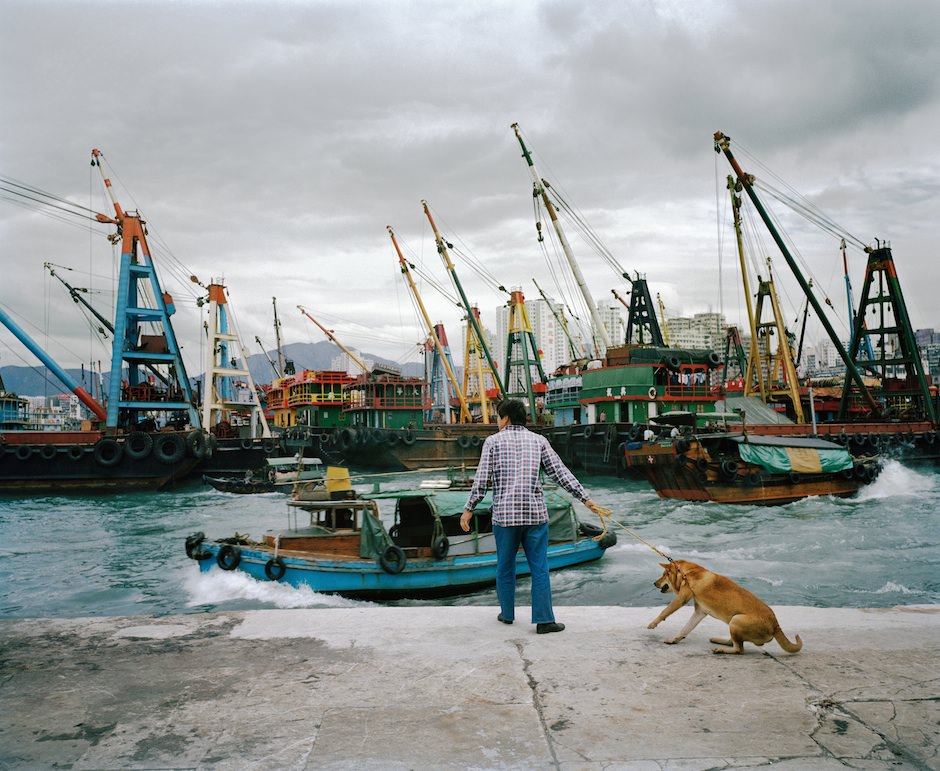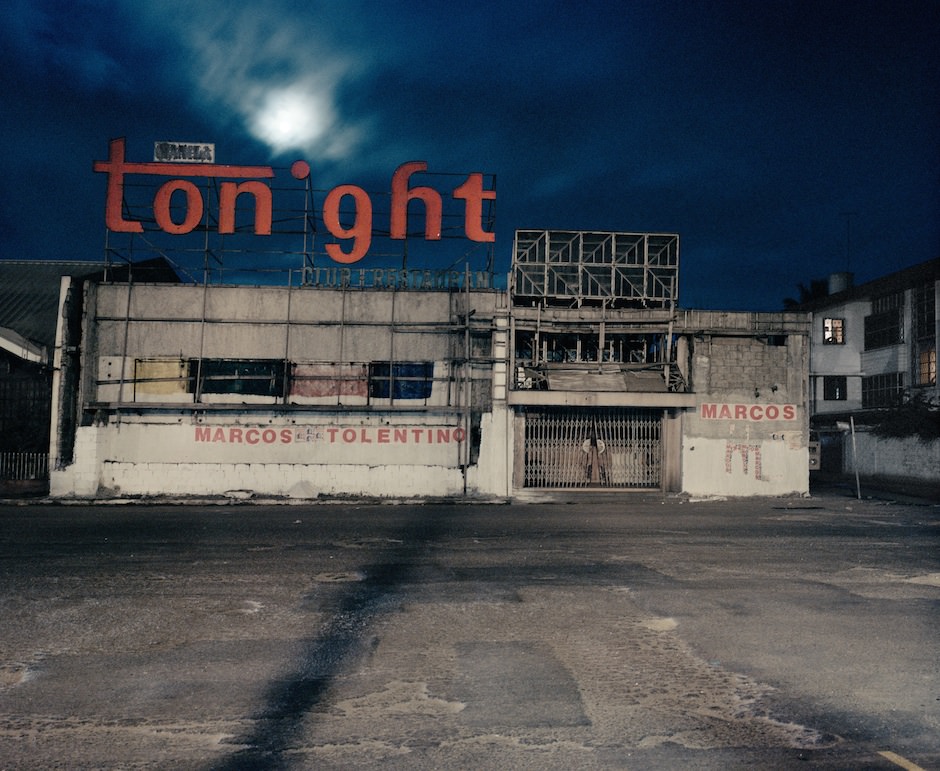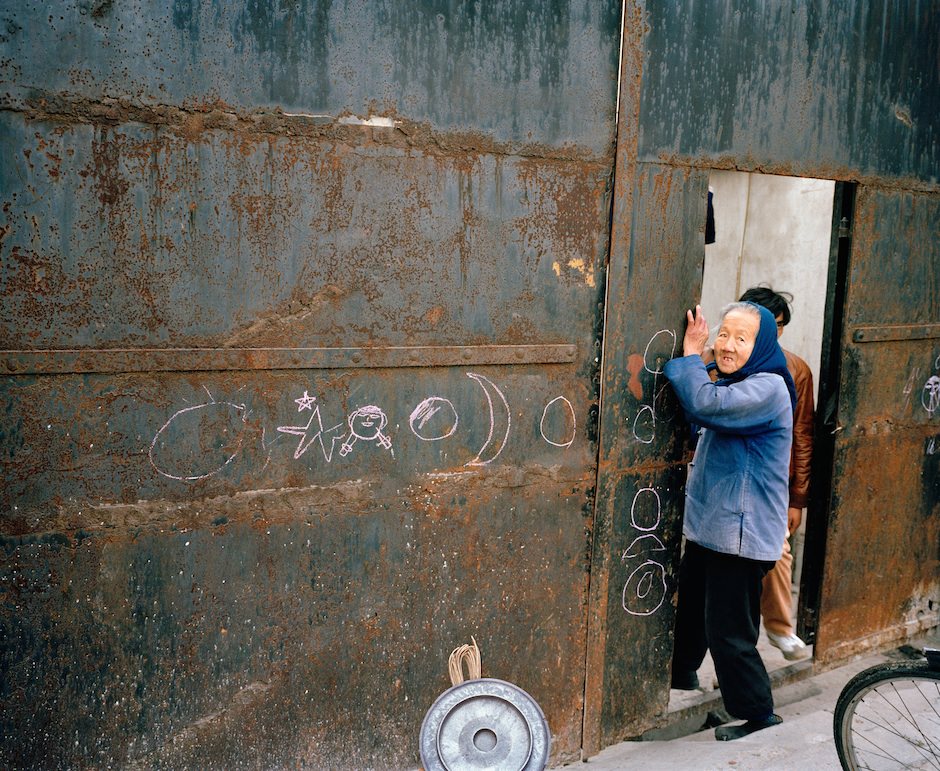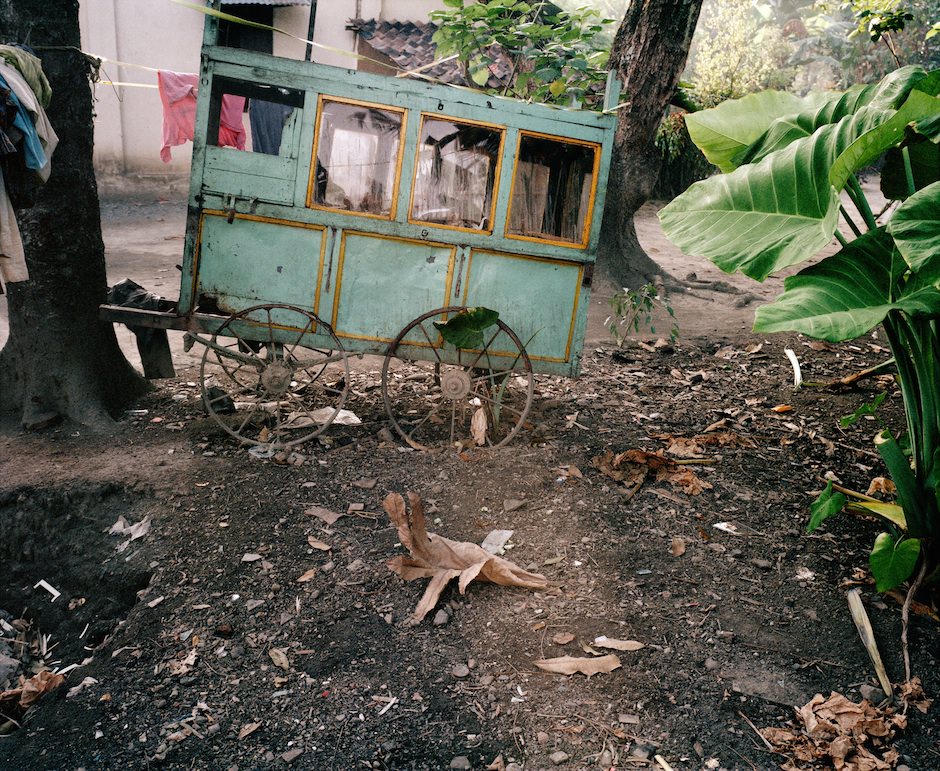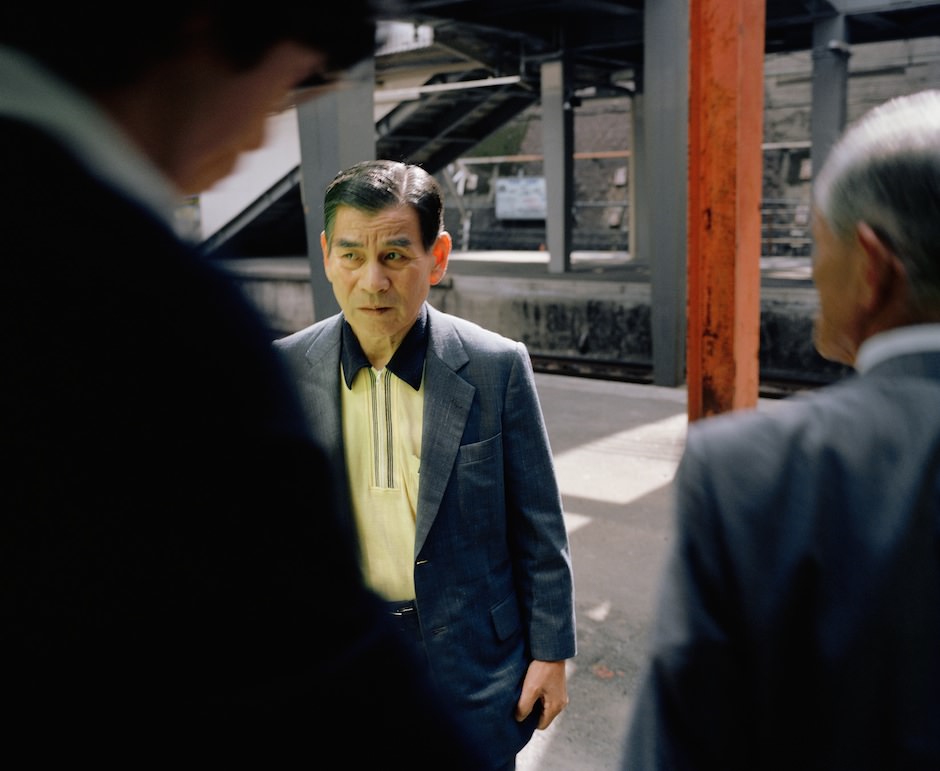My father, though he was never a photographer—he knotted his tie and went to an office most days of his working life—was an untiring walker of cities. Puna, Barcelona, Isfahan…he would ride in from the airport, see his bags to his room, then go straight into the streets and the alleys. His exploring had no goal that is easy to name, yet it was entirely purposeful. He was a connoisseur of what he saw. In Tokyo, for example, he wandered joyously over almost forty years, appraising the simple objects (cigarette packs, scrubbing brushes, tin snips, geta) that were ordered meticulously in tiny shops; the plastic plum blossoms and red maple leaves that, marking their seasons, festooned the high streets; the differences between the bulbous vacuum tubes he found in the electronics market at Akihabara and those he had known in Chicago and Boston; how businessmen scowled, how hair was cut, how coffee was ground. Such tangible phenomena as these, and countless more, seemed to combine in his mind with pieces of knowledge that were abstract or historical—why the gauge of railroad track in Japan was unusually narrow; that a flume in a certain rocky garden at a famous palace in Korea had been designed for the king, long ago, to float cups of wine downstream to his reveling companions—and connecting in obscure ways they made, for him, an extensive, idiosyncratic map. It was a work of his imagination as much as it was a depiction of the world. There were places on it to which he had never been. The Berlin of the 1920s was one; he knew its songs, its politics and its science; its streets were just slightly less visible to him than the ones down which he’d really stepped.
I accompanied him and my mother to Tokyo when I was nine, immediately beginning my own explorations by trolley and rowboat; we stayed for a number of years. Then, when I was twenty-five, I returned there, but this time with the definite aim of making photographs, and animated at once by adventurousness and nostalgia for those early days, I went beyond Japan too, well into China and Southeast Asia. I had moved to New York by now and was teaching at three colleges, and when the last bell rang each December and May I would leap for JFK with a cheap air ticket and the boxes of film I’d prepared, and spend the subsequent weeks and months on slow trains and rust-ridden ferries, in foul alleys and on narrow red roads that pressed far into green and silver-clouded hills. I did this each summer and winter for much of the 1980s, and in some of the springs and autumns as well, and studying the map by desk-light in Manhattan, the name of a place alone (Mae Hong Son; the Col de Nuages; Bukittinggi) could make me want to go there. So could the way the lines and marks on the paper crookedly suggested ten miles of flying corniche, or wound into the crumbling old town of a venerable city. I thought I could feel the terrain, even if I was only looking at two-dimensional symbols.
I stayed in quaint hotels and some that were appalling, also in some that were grand. I was an intent, anxious, too-serious boy bent over a heavy novel in the slop-strewn eating hall of a travelers’ block in Shanxi province; at an obscure mountain inn where the rain wouldn’t stop; in Bangkok, at yet another Indian cafe in a murky cul-de-sac. I sent many letters home, and there were days when I hardly talked to anyone but a driver and a couple of waitresses; the loneliness was often choking. The view changed constantly, but what hardly varied was the sequence of long walks each day, in the morning, in the afternoon, and sometimes again in the evening, through mazes of unknown streets in which one would turn intuitively to the left rather than the right, or right instead of left, hoping to see something unfold. What could that have been? If I say that those streets were fascinating, the truth is that they were almost intolerably dull—yet despite this I would plod through the better ones again and again. There were moments—this was the point—when a completely ordinary house or face or artifact or splash of light (and here you could never say if what happened was inherent in the thing per se or an effect the camera produced) seemed to reach beyond itself. It was unaccountably vivid, maybe, or seemed to carry deep feeling, or to reveal old strands of culture or history, or some paradox that could never be settled, or to say more richly than most things do what it itself was. It seemed somehow transcendent.
Advertisement
Eventually, I assembled a book of pictures that I called A Map of the East. It really did pretend to be a sort of map—it had a kind of argument to make; it walked you studiously back from what then looked current, Western, and hybrid in Asia toward what I found myself calling the ancient, organic, and untainted. A book is expected to do this, generally—to present a clever idea, so that we can say what it means—yet there are large parts of life upon which ideas lie lightly, where it seems truer to stay close to pure experience, and leave open whether what is in front of us means one thing, or something else again, or nothing at all. Two decades on, I have been unable to keep away from some of the photographs I excluded then—pictures that, in 1992, did not appear to me to advance a large theory, but that have kept on pleading not to be thrown out. These new turns in an old road may add little to the arc of the older book, but they seem to speak no less pressingly than it did, of other matters loosely connected—of the preciousness of daughters to their families, say; of a child’s interior strife; of the amazing density of the tropical shock city; of the darkness that sweeps over the afternoon in the months of rain.
Not long ago, I asked my mother why my father so loved to walk his cities, and she replied that he saw in the things he appreciated the nobility of the lower middle-class. This was an interesting thought, and it may even be that he perceived such a quality (he was enchanted by the impulse toward civilization, wherever it appeared spontaneously), but it could only have been a piece of the answer. In fact, there is an old letter in which he wrote that he felt deficient for being unable to follow the itineraries my mother drew up when they traveled, taking them to one and then another important site. A little embarrassed, a little apologetic, he seems in it to be confessing that he lacks discipline, which, on his walks anyway, he probably did, the freedom with which he went being the true why. The string of photographs in New Turns in Old Roads—some of which are included here—I wonder if it is not a lot like what led him through his streets: a rising and falling ribbon five feet or so above the ground, of ugliness and beauty, questioning, memory, shining inconclusion, along which you move from eyehold to eyehold, elated even if the thing that faces you is shabby or grim, feeling that you could go on forever.
Adapted from the introduction to Leo Rubinfien’s new book of photographs, <ahref=”http://www.takaishiigallery.com/en/archives/14628/”>New Turns in Old Roads, which has just been published by the Taka Ishii Gallery. Images from his 1992 book, A Map of the East, are now on view in Leo Rubinfien: Vintage prints from A MAP OF THE EAST 1980 – 87, running at the Taka Ishii Gallery Photography/Film, in Roppongi, Tokyo through December 6.


